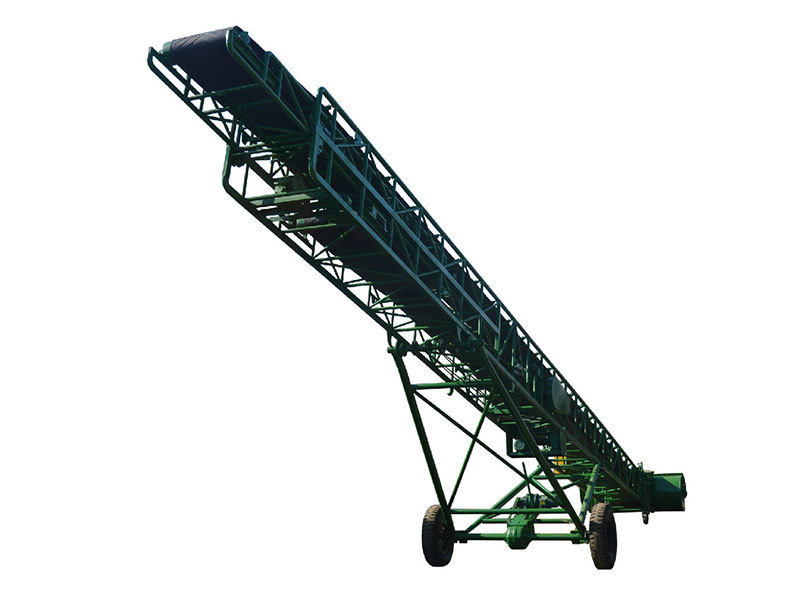Understanding the Functionality and Benefits of Sidewall Belt Conveyors
Aug 12,2025

Sidewall belt conveyors are an innovative solution in the field of industrial equipment and components, specifically within the category of chain and conveyor systems. Unlike traditional flat belt conveyors, sidewall belt conveyors feature vertical sidewalls that enable them to transport materials efficiently at an incline or in confined spaces. This design significantly enhances their versatility in various applications, making them a preferred choice for industries that require reliable and effective material handling solutions.
One of the primary benefits of sidewall belt conveyors is their ability to handle bulk materials without the risk of spillage. The raised sidewalls and cleated belts provide necessary containment, ensuring that materials remain securely on the conveyor during transit. This feature is particularly advantageous when moving loose, granular materials such as sand, gravel, coal, or agricultural products. By minimizing product loss, businesses can enhance operational efficiency and reduce costs associated with waste management.
Another notable advantage of sidewall belt conveyors is their adaptability to challenging layouts. They can navigate tight spaces, changes in elevation, and even complex routing that traditional conveyors may struggle to accommodate. This flexibility is invaluable in industries such as mining, construction, and manufacturing, where space can often be limited. By employing sidewall belt conveyors, companies can optimize their workflows, ensuring materials are transported from one point to another smoothly, even in demanding environments.
Furthermore, the design of sidewall belt conveyors allows for adjustable angles of inclination. This feature enables industries to transport materials upward or downward with ease, making them suitable for multi-level operations. Whether it’s elevating materials from a lower storage area to a higher processing facility or vice versa, sidewall belt conveyors can effectively manage these transitions without compromising performance.
Maintenance of sidewall belt conveyors is also a critical consideration for businesses. Regular inspections and maintenance can prolong the lifespan of the equipment and ensure optimal performance. Companies should establish a routine maintenance schedule that includes checking the belt condition, sidewall integrity, and overall alignment to prevent operational downtimes and enhance reliability.
In conclusion, sidewall belt conveyors offer numerous advantages that make them an essential component in many industrial sectors. Their ability to transport materials securely, navigate confined spaces, and accommodate various inclines positions them as a highly efficient solution for modern material handling challenges. As industries continue to evolve, the use of sidewall belt conveyors will likely expand, providing businesses with innovative ways to enhance productivity and streamline operations.
One of the primary benefits of sidewall belt conveyors is their ability to handle bulk materials without the risk of spillage. The raised sidewalls and cleated belts provide necessary containment, ensuring that materials remain securely on the conveyor during transit. This feature is particularly advantageous when moving loose, granular materials such as sand, gravel, coal, or agricultural products. By minimizing product loss, businesses can enhance operational efficiency and reduce costs associated with waste management.
Another notable advantage of sidewall belt conveyors is their adaptability to challenging layouts. They can navigate tight spaces, changes in elevation, and even complex routing that traditional conveyors may struggle to accommodate. This flexibility is invaluable in industries such as mining, construction, and manufacturing, where space can often be limited. By employing sidewall belt conveyors, companies can optimize their workflows, ensuring materials are transported from one point to another smoothly, even in demanding environments.
Furthermore, the design of sidewall belt conveyors allows for adjustable angles of inclination. This feature enables industries to transport materials upward or downward with ease, making them suitable for multi-level operations. Whether it’s elevating materials from a lower storage area to a higher processing facility or vice versa, sidewall belt conveyors can effectively manage these transitions without compromising performance.
Maintenance of sidewall belt conveyors is also a critical consideration for businesses. Regular inspections and maintenance can prolong the lifespan of the equipment and ensure optimal performance. Companies should establish a routine maintenance schedule that includes checking the belt condition, sidewall integrity, and overall alignment to prevent operational downtimes and enhance reliability.
In conclusion, sidewall belt conveyors offer numerous advantages that make them an essential component in many industrial sectors. Their ability to transport materials securely, navigate confined spaces, and accommodate various inclines positions them as a highly efficient solution for modern material handling challenges. As industries continue to evolve, the use of sidewall belt conveyors will likely expand, providing businesses with innovative ways to enhance productivity and streamline operations.
Hot Tags:
PREVIOUS:
Contact Us
E-mail:byunfei2000@gmail.com
Wechat/WhatsApp:+86 17324886663
WhatsApp:+86 18738568071
Address:No. 12 Industrial Road, Zhaipo Town, Xinxiang, Henan Province







